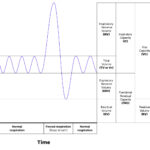In the context of pulmonary function testing, a Z-score and LLN (Lower Limit of Normal) are statistical measures used to interpret test results:
Z-Score
A Z-score represents the number of standard deviations a value is from the mean of a reference population. In pulmonary function testing:

- Z-Score Calculation:
Here, the predicted value is based on reference equations that consider factors like age, sex, height, and ethnicity. - Interpretation:
- A Z-score of 0 means the measured value is exactly the same as the predicted value.
- Positive Z-scores indicate values above the predicted mean.
- Negative Z-scores indicate values below the predicted mean.
- Typically, Z-scores within the range of -1.96 to +1.96 are considered normal, encompassing approximately 95% of the healthy population.
LLN (Lower Limit of Normal)
The LLN is a specific threshold used to determine abnormality in lung function parameters. It represents the lowest limit within the normal range and is often defined as the 5th percentile of the reference population distribution:
- Calculation: The LLN is calculated using the reference population data, usually being the value that lies at the 5th percentile of this population.
- Interpretation:
- A measured value below the LLN indicates that the result is significantly lower than what is expected in a healthy individual, suggesting potential abnormality or disease.
- For example, in spirometry, if a patient’s FEV1 (Forced Expiratory Volume in one second) is below the LLN, it may indicate obstructive airway disease.
Using both the Z-score and LLN allows clinicians to make more nuanced interpretations of pulmonary function test results, providing better diagnostic and management insights for respiratory conditions.



